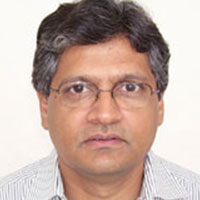In a recent article, Surjit Bhalla has asserted that the Food Security Bill will increase costs of food grain subsidy by 336%. Correcting errors in his calculation brings this figure down to 18%. In this article, the authors explain the errors and present the correct cost figures of the Bill.
In a recent article, Surjit Bhalla (‘Manmonia’s FSB: 3% of GDP’, 6th July, Indian Express; http://www.indianexpress.com/news/manmonias-fsb-3--of-gdp/1138195/) has asserted that the Food Security Bill will cost 3% of GDP. This figure is almost three times the estimate offered by the government. Bhalla ends the article by throwing a challenge to prove him wrong. We believe that Bhalla’s calculations have a serious error. Since he was explicit about his calculations, the errors are easily corrected. When we do that we find the estimate of costs increases by only 18% and not by 336%, as alleged by Bhalla for the part of the Bill he focuses on. This may be surprising at first glance but this is due to the fact that though the National Food Security Ordinance (NFSO) expands the coverage, it reduces the amount of grain per person for the Below Poverty Line (BPL) population excepting the poorest of the poor.
The food subsidy is the product of three factors:
Cost increase factor = p x g x s
where p = proportional increase in coverage, g = proportional increase in grain receipts per covered person and s = proportional increase in subsidies in Rupees per kg. Bhalla first considers the expansion of coverage from 44.5% to 67 %. Quantity and subsidy rate unchanged, this would increase the food subsidy by a factor amounting to 67/44.5 or by 50%. His second step is to consider the change in quantity supplied. He points to the National Sample Survey (NSS) consumption data of 2011-2012 that shows that per capita consumption of Public Distribution System (PDS) grain in the country is 2.1 kg per month. The NFSO, he claims, would obligate the government to supply 5 kg per month per capita. Hence, this by itself, would increase the subsidy by a factor of (5/2.1) or by 138%. Finally, the subsidy rate is projected to increase from Rs. 13.5 to Rs. 16.5 for a kg of grain. On account of this, the subsidy increases by (16.5/13.5) or by a factor of 1.2 or 20%. Multiplying all of these together, he concludes the subsidy would increase 4.36 times or by 336 % which would then account for 3% of GDP.
Bhalla has made two distinct errors in his second step (i.e., calculating ‘g’):
Error (a): an arithmetic error by not properly adjusting for the base population, and
Error (b): comparing the per capita amount of food grains currently received by beneficiaries with the per capita amount of food grains the government promises to release under NFSO.
Error (a): NFSO promises 5 kg to 67% of the population and not to everybody. The NSS consumption figure of 2.1 Kg, on the other hand, is the average consumption of PDS grain for the entire country (total consumption of PDS grain divided by the entire population of India). If 45% of the population is receiving food grains, and it is 2.1 kg per member of the general population, then each beneficiary is receiving 2.1/0.45 = 4.67 kg on average. NFSO will increase this to 5 kg. Then Bhalla’s formula would yield:
1.5 x (5/4.67) x (16.5/13.5) = 1.96
That is, the food subsidy bill should roughly double and come to around 1.35% of GDP, which is still way less than the numbers he put out.
Error (b): But even this would be an overestimate due to the fact that he is mistaking the per capita NSS consumption figure with what the Central government supplied to the state governments before the ordinance went into effect. The average consumption refers to what households received and not what government supplied. The difference between the two is the famous ‘leakage´ of the PDS.
In 2011-2012, the PDS off-take was 51.3 million metric tonnes of grain which means the per capita supply of grain by the government to the 44.5 % of the population (of 1.21 billion) works out to be 7.9 kg per month. The second ratio therefore should be (= 5/7.9) instead of (5/2.1). Correcting this error, the product of the three ratios ((67/44), (5/7.9), (16.5/13.5)) turns out to be 1.181. That is, the subsidy amount increases by approximately 18%. In rupee terms, the subsidy increases from Rs. 72,000 crores ($11.8 billion approx.) to Rs. 85,000 crores ($13.9 billion approx.) firmly within 1% of GDP.
What is interesting is that the supply of grain per eligible person under the NFSO has actually gone down from 7.9 kg to 5 kg but the coverage has gone up from 44.5% to 67%. This fact has gone mostly unrecognised.
The absurdity of Bhalla´s claim can be directly seen from the fact that the Food Ordinance requires about 52 million tonnes while the current government supply is itself 51.3 million tonnes. Therefore, the incremental subsidy increase would surely be modest. Bhalla´s use of NSS consumption figures implies that he expects consumption figures to scale up to 5 kg. With existing leakages (amounting to 40% of supply), this would happen if the Central government supplies well in excess of 5 kg per beneficiary. This is not going to happen. The Central government obligation ends with their supply of 5 kg per beneficiary (with some additional supply to Antyodaya Anna Yojana (AAY) households) to the states. If some of this quantity "leaks" out to blackmarketeers and others, beneficiary households lose but the budgetary cost does not rise.
It is possible that Bhalla wants to take the figure of 5 kg at ‘face value’ and hence he holds the Central government responsible for ensuring that 5 kgs of food grain per person per month reach the PDS beneficiary. We believe that is not a fair expectation as running the PDS is the responsibility of the state governments. But even if we assume that this expectation of his is justified, the food subsidy bill will be 1.35% GDP and not 3%. The ‘minions´ at the Finance Ministry whom Bhalla scorns estimated the total cost of Rs. 125,000 crores ($20.4 billion approx.) because they rightly included the cost of associated welfare programmes as well as the cost of implementing the programme. Interestingly, most of the cost increase over the existing food subsidy programme is due to the expansion of direct nutritional interventions such as mid-day meals etc. and not due to greater allocation of food grains through PDS, as Bhalla believes.
Bhalla is barking up the wrong tree. The major concern about the NFSO is not its immediate cost. The major concern ought to be how to ensure that the full benefits are received by households. How can leakages be stopped? The costs to think about are those borne by households and not by the government. A PDS-driven model drives out local and often more nutritious cereals from household budgets. On the producer side, excessive increases in Minimum Support Price (MSP) lead to more grain production at the cost of other foods such as pulses, vegetables and fruits. These latter costs are certainly not budgetary costs. But still, the debate about the NFSO should be about these costs and how they can be minimised by the judicious use of cash transfers and other policies. We hope that the debate will not be led astray by reckless calculations that remain unexamined.
"Correct costs of the Food Security Bill" by Bharat Ramaswami, Milind Murugkar & Ashok Kotwal. Reprinted from THE FINANCIAL EXPRESS online with the permission of The Indian Express Limited © 2013. All rights reserved throughout the world"




 28 August, 2013
28 August, 2013 






Comments will be held for moderation. Your contact information will not be made public.